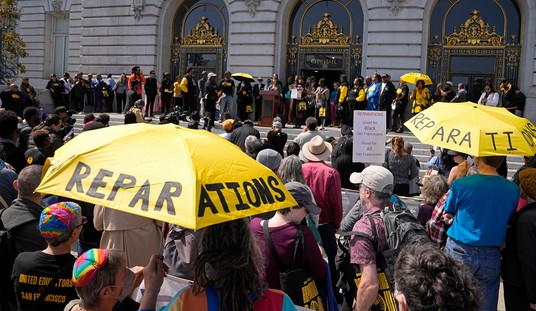Liberals talk about "income inequality" as if it is caused by insufficient government action -- including insufficient taxation of those they call the "rich."
House Minority Leader Nancy Pelosi, for example, always frames the tax issue within the class war she imagines -- or pretends -- she is fighting against the wealthy on behalf of the workers.
President Trump's tax cut plan, she said in a Labor Day statement, is "a billionaires-first, trickle-down tax scheme that hands out massive tax cuts to the wealthiest, paid for by American families."
But what really causes income disparity in the United States? Who makes more than whom?
The Census Bureau's annual report on American incomes, as this column has previously noted, presents data that answers these questions.
The new report is accompanied by Table HINC-01: "Selected Characteristics of Households, by Total Money Income in 2016."
It lists three types of "family households" and four of "nonfamily households."
A family household, by the Census Bureau's definition, "includes a householder and one or more people living in the same household who are related to the householder by birth, marriage, or adoption."
"A nonfamily household," it says, "consists of a householder living alone (a one-person household) or where the householder shares the home only with people to whom he/she is not related (e.g., a roommate)."
Of the seven types of households listed in Table HINC-01, the wealthiest were married-couple families, which had a median income of $87,057.
It was a steep drop from there to second place: Family households with a male householder -- but no spouse present -- had a median income of $58,051.
Recommended
That was $29,006 -- or 33.3 percent -- less than married couple households.
The next wealthiest households were nonfamily households with male householders, which had a median income of $41,749.
Then followed families with female householders but no spouse present ($41,027); male householders living alone ($35,265); nonfamily households with female householders ($30,572); and female householders living alone ($26,877).
But, of course, not all married-couple families are equal. The Census Bureau's Table FINC-03 shows the impact children can have.
Married couples with no children had a median income of $81,529 in 2016. Married couples with one child between 6 and 17 years of age had median incomes of $95,965. Married couples that had two or more children between 6 and 17 had median incomes of $102,657.
In America, moms and dads with at least two young kids have a median income ($102,657) approximately three times that of men who live alone ($35,265).
Education, too, causes income inequality.
According to the Census Bureau's Table FINC-01, families with a householder 25 or older, who graduated from high school but not college, had a median income of $54,601.
Median income then increases in direct correlation to the educational attainment of the householder. Families with householders who attended some college but earned no degree had median incomes of $66,859. That is surpassed by families whose householders had associate's degrees ($76,012), bachelor's degrees ($105,271), master's degrees ($124,302) and doctorates ($155,089).
Families where the householder has a professional degree had the highest median income: $166,662.
Working also causes income inequality.
As with the educational attainment of the householder, household income directly correlates to the number of "earners" in a household.
"Earnings" -- the things that "earners" get -- include "wages or salary, net income ... from nonfarm and farm self-employment, Armed Forces pay, commissions, tips, piece-rate payments and cash bonuses," according to the Census Bureau.
"Income," by contrast, includes not only earnings and such things as interest, dividends and rental income, but also government benefits ranging from Social Security to "any cash public assistance or welfare payments from the state or local welfare office."
Of the 126,224,000 households in the United States in 2016, according to Table HINC-01, 29,750,000 -- or 23.6 percent -- had "no earners" at all. These households had a median income of $22,272.
They were surpassed by households with one earner ($48,550), two earners ($94,679), three earners ($115,357), and four earners or more ($143,000).
American households where two people worked ($94,679) had more than four times the median income of households where no one worked ($22,272).
Growing older also causes income inequality.
Median income in 2016 started at $41,655 for householders 24 or under. It rose to a peak of $77,213 among householders 45 to 54. It then dropped to $65,239 among householders who are 55 to 64, and to $49,072 among those 65 to 74. It bottomed out at $31,313 for those 75 and older.
The "rich" -- the people liberals want to tax more -- are those who stayed in school, got married, had kids, worked and persisted.
There is not a class war in America. There is a cultural war. It is between those who pursue the traditional life of the American dream and those who want to reduce more Americans to a broken life of government dependency.

























Join the conversation as a VIP Member